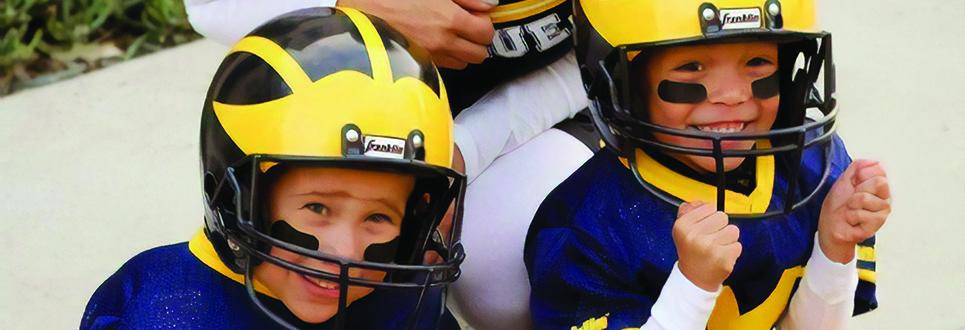Child Care Subsidy


The University of Michigan offers the Child Care Subsidy to students to assist with the cost of State of Michigan licensed child care of their young, dependent children.
To be eligible for consideration for the child care subsidy, students must:
U-M will make an exception to employment criteria for a non-student partner/spouse who cannot work due to a disability. Please note this on your application so your situation may be considered during review. You may be asked to document your partner/spouse's employment or student status. Read an explanation of why the university requires spouses to be in school or employed. Read an explanation of why the university requires partners/spouses to be in school or employed.
Note: If you do not meet eligibility criteria for the Child Care Subsidy Program but believe you have an extenuating circumstance, please contact us and offer details.
a. If you received the subsidy for fall/winter terms and want it for spring/summer, you must submit a new application.
b. International students only: Beginning with the spring/summer 2023 term, the Child Care Subsidy Application will ask you to provide financial information about you (and your spouse) in lieu of the FAFSA. Please be prepared to provide your income and asset information at the time of application.
Students are encouraged to apply as soon as possible, as applicants will be funded on a first-come, first-served basis. The application for this term is typically made available in summer, and notifications will be sent to prior applicants in mid-July. Funding may be limited – should funding be exhausted, the application will be removed from our website.
Students are encouraged to apply as soon as possible, as applicants will be funded on a first-come, first-served basis. The application for this term is typically made available in February. Notifications will be sent to eligible applicants in mid-April and only once students are enrolled for the term. Funding may be limited – should funding be exhausted, the application will be removed from our website.
The amount of Child Care Subsidy awarded to eligible applicants is based on applicants' financial need, the number of children they have enrolled in licensed child care facilities, their child care expenses, and available funding. Applicants will be notified in writing of their eligibility for the subsidy and the amount they will receive. The subsidy amount cannot exceed the cost of your licensed child care.
You must demonstrate financial need to be eligible for the Child Care Subsidy program. Financial need is calculated as follows:
Estimated Cost of Attendance
– Expected Family Contribution/Available Resources
= Demonstrated Financial Need
This estimated amount includes tuition, fees, an allowance for books and supplies, a reasonable allowance for living expenses, and child care expenses as reported on the Child Care Subsidy Application.
The Office of Financial Aid calculates your eligibility based on your Child Care Subsidy Application and the FAFSA or International Student Financial Data. The calculation is based on such items as your earnings; checking, savings, cash, and money market accounts; investments and real estate holdings other than your family's primary residence; business equity; untaxed income; income from assistantships; and other financial aid you are receiving through your academic department and the Office of Financial Aid.
Funds are disbursed through the University Student Account system in the form of a refund. If you have authorized direct deposit, funds will be deposited to your bank account. For information about direct deposit, (see the Direct Deposit section from the Student Business page of Wolverine Access). If you do not have direct deposit authorized, a paper check will be mailed to your local address listed in Wolverine Access. Please note that paper checks will take longer to receive than direct deposit. You are encouraged to set up direct deposit to receive your refund as soon as possible.
We will need to verify your expenses and your child care provider's licensure information prior to payment.
If you need assistance completing the Free Application for Federal Student Aid (FAFSA) or if you have questions about the Child Care Subsidy, our staff members in the Office of Financial Aid can assist you. You may also email us at [email protected] or visit our Child Care Subsidy FAQ.
U-M Human Resources has gathered resources to help you in your search for child care, including the State databases of all licensed child care programs, the U-M Children’s Centers, Campus Child Care Homes, Kids Kare at Home occasional backup care, in-your-home resources, and more: